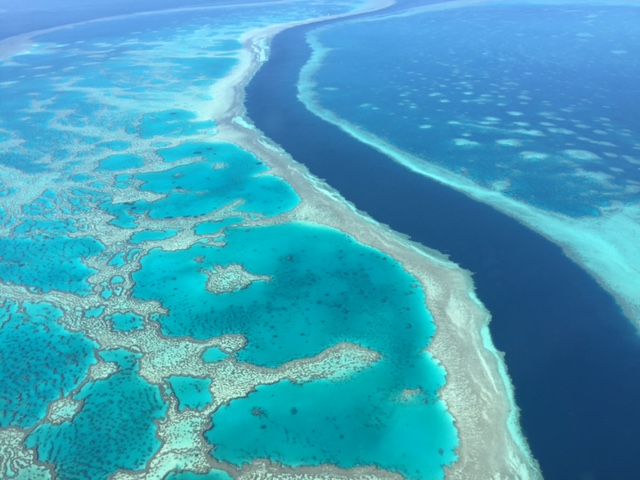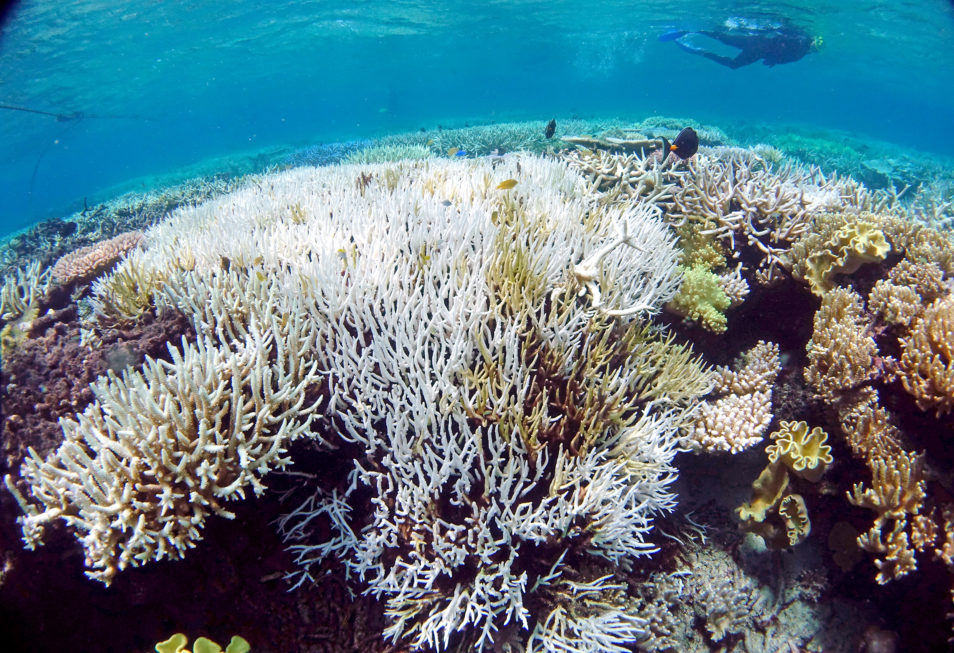
Heat-resistant coral is being built to handle the heat in the Great Barrier Reef.
You’ve likely heard the saying “if you can’t handle the heat, get out of the kitchen”. But what if the kitchen is actually the ocean and you’re merely a piece of coral just trying to get by? You can’t get out – but it turns out you can get a little more resilient.
We’re part of a collaborative team of scientists that has successfully grown coral in a laboratory setting that is more resistant to increased seawater temperatures.
So why is it important that coral be built to handle the heat?
Heat-resistant coral has the potential to reduce the impact of reef bleaching. This bleaching can come as a result of marine heatwaves. As a result of climate change, marine heatwaves are becoming more common.
Speaking of current events
The coral-focused taskforce included researchers from our Synthetic Biology Future Science Platform (SynBio FSP), the University of Melbourne and Australian Institute of Marine Science (AIMS).
Our science lead, Dr Patrick Buerger, said coral reefs are in decline worldwide.
“Climate change has reduced coral cover, and surviving corals are under increasing pressure as water temperatures rise and the frequency and severity of bleaching events increase,” he said.

Bleached coral on the Great Barrier Reef. Credit: Chris Jones
How to create heat-resistant coral
So, how did they do it? The first step to making coral more tolerant of temperature-induced bleaching is olstering the heat tolerance of its microalgal symbionts. These are tiny cells of algae that live inside the coral tissue and supply the coral with nutrients.
“Our novel approach strengthens the heat resistance of coral by manipulating its microalgae, which is a key factor in the coral’s heat tolerance,” Dr Buerger said.
The team then began isolating the microalgae from coral and culturing them in the lab. This was done using a technique called “directed evolution”. The final step in the process was to expose the microalgae to increasingly warmer temperatures. This occurred over a period of four years.
The process assisted the microalgae to adapt and survive hotter conditions.
“Once the microalgae were reintroduced into coral larvae, the newly established coral-algal symbiosis was more heat tolerant compared to the original one,” Dr Buerger said.
“The temperatures the microalgae were exposed to are comparable to the ocean temperatures during current summer heatwaves. Similar ones are causing coral bleaching on the Great Barrier Reef. This gave us insight into some of the mechanisms responsible for the enhanced coral bleaching tolerance,” he said.
Professor Madeleine van Oppen was the project lead for AIMS and the University of Melbourne.
“We found that the heat-tolerant microalgae are better at photosynthesis and they improve the heat response of the coral animal,” she said.
“These exciting findings show that the microalgae and the coral are in direct communication with each other.”
The future of coral
Our next steps? We need to further test the algal strains in adult colonies and across a range of coral species.
“In order to be effective, the tool must combine with conventional environmental conservation and determined action on climate change mitigation,” Dr Buerger said.
“Most importantly, we need to have conversations with the Australian public. And with the various groups that rely on the Reef for their livelihood before we move to the implementation stage.”
SynBio FSP Director Associate Professor Claudia Vickers said: “This breakthrough provides a promising and novel tool to increase the heat tolerance of corals and a great win for Australian science.”


28th May 2020 at 7:51 pm
Ian Farquhar,
This is fantastic and encouraging research. Are there options for other species? Here in Tasmania we have lost much of our giant kelp. Is this receiving any research attention?
28th May 2020 at 11:49 am
Dear Fifty Toes Walkabout
You make a great point, that is why this synthetic Biology approach is just one of the ways science is looking to mitigate climate change impacts in the GBR. A few ideas have seen generating low level cloud mists to increase light refraction and decrease water temperatures. Some are looking at breeding platforms with built in algal shade to increase CO2 absorption and decrease harmful UV radiation. Methods to permanently remove invasive species to reduce competition for space. There has also been a concerted effort made to block mechanical damage caused by dredging deposits, ships anchors and mining runoff. Of course any one involved in the reef is pushing for the scientific narrative to be heard, by the general public, media, economy and governments. As without their whole hearted support the world not just the reef is going to suffer greatly the effects of severe climate change.
27th May 2020 at 4:12 pm
Some years ago we visited the Coral Reef in the Red Sea while in Egypt. It was quite lovely. I have been told it thrives because it can withstand higher water temperatures.
15th May 2020 at 6:03 pm
Genetically engineering a handful of the resident coral species to make them more resilient to warmer water temperatures does not seem to be more than an interesting experiment toward solving the problem. All the ecosystem species that rely on other coral species will not persist if only a handful of robust coral species prevail. It strikes me that a much more practical solution would be to build “refuges” where the temperature matches their expected tolerance range and backup populations could be built up. The investment to do this would be relatively small. On our east coast the EAC would facilitate movement of accompanying species to the new refuges (assuming they are in more southern locations). Notwithstanding ethical considerations associated with both approaches, it would be interesting to see which would be more successful.
14th May 2020 at 9:14 am
Thats amazing